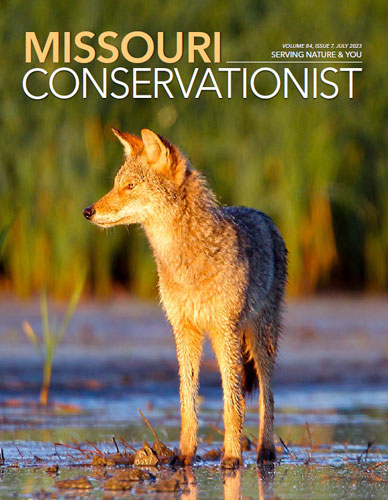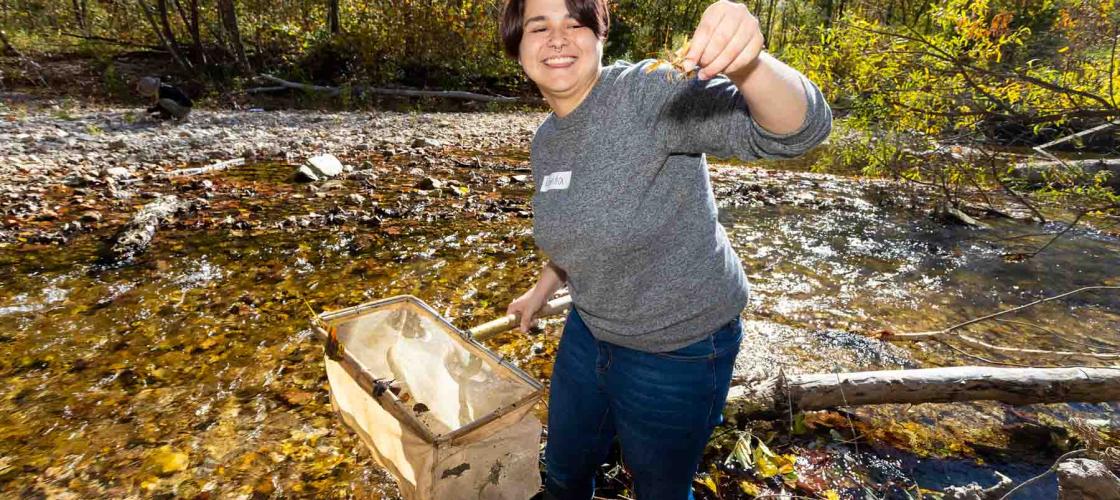
With an ever-evolving society, one thing remains constant — the need to foster stewardship among Missourians to conserve our natural resources. To meet that need, the statewide Missouri Master Naturalist Program promotes environmental stewardship by combining education and action to restore and preserve ecosystems, empower communities, increase citizen awareness, collect data, and master skills, knowledge, and habits to improve the environment.
Unique Program History
It became clear to MDC and University of Missouri Extension (MU Extension) that a program encompassing skilled volunteers to improve and steward Missouri natural resources was desired.
“We envisioned developing a partnership to create a program in which well-informed and engaged volunteers would be involved in expanding our capabilities of delivering natural resource education and community service throughout the state,” said Bob Pierce, MU Extension fisheries and wildlife specialist and Master Naturalist Program state coordinator.
The program would build a legacy of informed and trained citizens to promote awareness, understanding, and respect of Missouri’s natural ecosystems. The Missouri Master Naturalist Program combines education and volunteer service at the community level and empowers citizens to become more involved in natural resource management and education.
In 2004, the program was piloted in West Plains and Columbia with over 60 participants. Chapters were organized at these locations, and the program eventually became a statewide effort.
“After these successes, the program exploded with interest from numerous MU Extension specialists and MDC staff in other locations across the state,” said Pierce.
Since that time, the program has trained more than 2,700 volunteers, with over 700 of these individuals maintaining their certification and actively participating in 12 chapters throughout the state. As of 2022, Master Naturalists have provided over 800,000 hours of volunteer service.
“Statewide we are small in numbers, but if we can educate enough people to be onboard, then we’ll have that army of people we need to protect the environment for future generations,” said Damon Kempker, Boone’s Lick Chapter.
Program Organization
The program is directed by two state coordinators (one from each sponsoring organization) who provide training guidelines and curriculum resources, set statewide program policies, and approve training opportunities. Funding and support for the program are provided by MDC and MU Extension.
Chapters are vital to the Master Naturalist Program. Chapter advisors, representing both MDC and MU Extension, provide the program with critical leadership at the local level by conducting and organizing training, working with chapter volunteers, and providing a communication link to the state coordinators and chapter leaders.
Chapters are self-governed by officers and committee members. Chapters have “many strong leaders who are forward looking in how they structure their group and provide ongoing training for their members,” said Miramiguoa Chapter Advisor Matt Herring.
Monthly chapter meetings are held inside, outdoors, or virtually. The volunteers continually engage members and the public through educational outreach on chapter’s Facebook pages, blogs, news articles, radio spots, and exhibits.
Initial Training
“You are never too old to learn about nature,” remarked Robert Kipfer, Springfield Plateau Chapter.
Through the various chapters, volunteers begin their journey with a minimum 40-hour initial core training course focused on ecological concepts and important natural resources in the region. The training teaches skills to prepare Master Naturalists for volunteer service. The course includes weekly presentations combined with field experiences led by expert biologists, conservationists, geologists, and others from local, state, and federal agencies and universities.
Field trips offer exceptional opportunities for trainees to generate connections, expand understanding, and sharpen skills.
“Field trips are the most impactful activities,” said Springfield Plateau Chapter Advisor Lyle Whittaker. “It allows members to share and highlight strengths.”
Jesse L. Johnson, Osage Trails Chapter, recalls one memorable trip.
“My all-time favorite program was when I was still a trainee,” Johnson said. “One of our training field trips was spent with MDC staff on boats near the Kansas-Missouri river confluence learning about aquatic species and invasives. It was an eye-opening experience to have invasive carp literally jumping in our boats as we searched for sturgeon.”
Providing training on the chapter level ensures that it focuses on local nature and needs. Ecoregions differ throughout the state, so Master Naturalists become experts in their own backyards and the natural areas that surround their communities.
“You learn the facts from subject matter experts and apply what you learned to offer a solution,” remarked Ken Barrows, Miramiguoa Chapter. “Volunteers acquire knowledge about Missouri’s natural resources and varied physiographic regions through science-based education and end their training with a volunteer community service capstone project.”
Partnerships
“Conservation requires everyone to work together to make a difference,” said Cynthia Naff, Chert Glades Chapter.
The partnership amongst MU Extension, MDC, and over 200 local chapter partners has resulted in a unique master volunteer organization.
Master Naturalist chapter partners provide training and volunteer opportunities, resources, and continuing education with specialized training.
“The program is multifaceted,” said Tracy Bono, Miramiguoa Chapter. “It connects partnerships and fosters collaboration amongst the citizens of our state. The best part, for me, has been the personal development opportunities and absolute joy experienced being a part of the spectacular natural beauty of our great state.”
Master Naturalist chapters promote community partner projects for volunteers and provide the necessary training. Jointly, partners can utilize Master Naturalists for work that involves critical thinking in relation to the local, natural world. The skilled volunteers go beyond basic projects to deliver work and content to educate their communities about natural resource conservation.
Certification
“The name might scare you, ‘master’ naturalist,” said Roxanne Stockdall, Hi Lonesome Chapter. “I have realized that I didn’t need to be a master to begin this journey nor did I need to become a master after my initial classes. It’s a process.”
Volunteering is the reason why the program exists. After completion of the initial training, members are required to complete a minimum of 40 service hours annually and a minimum of eight hours of advanced training to become and remain a Certified Master Naturalist. The annual certification requirement “involves you with nature and helps with the environment; a great way to be good stewards for our world and keep it beautiful and healthy,” said Beth Zona, Confluence Chapter.
Certification in the program often leads to volunteers being recognized as environmental leaders in their communities.
“I commonly get asked what I’m doing and why,” said Beth Caruthers, Springfield Plateau Chapter. “It’s fun to talk to people who are truly interested.”
Advanced Training
Master Naturalists “are primarily lifelong students that enjoy learning new things every day and sharing that knowledge with others in order to inspire further action in conservation,” said Caruthers. The training courses give volunteers a foundation for further learning and volunteering in various conservation efforts.
More advanced training provides Master Naturalists opportunities to focus their interests on more specific topics that interest them. Annual advanced training promotes continued development and provides the experienced Master Naturalist with tools to work in environments where more skill is needed.
“I appreciate the experience and opportunity to learn many things about the world of nature we all live in,” said Gerry Crawford, Loess Hills Chapter.
Lifelong Benefits
Master Naturalist volunteering not only supports and promotes environmental conservation, but it also gives members the opportunity to support climate actions, promoting environmental, economic, and social sustainability.
“After the devastation of the Joplin tornado our chapter was a community leader,” said Chert Glades Chapter Advisor Jeff Cantrell. “We advised and assisted on a wide variety of clean-up and rebuilding projects with some type of naturalist theme in focus. We helped rule out nonnative trees being planted in public areas, distributed naturescaping plants and resources, conducted trail work and removed rubbish/waste materials, and lastly became information resources at town planning meetings.”
Volunteer Service: Isn’t All Work
While Master Naturalists’ stewardship is an important part of land management for conservation and recreation throughout Missouri, the volunteers enjoy many adventures, friendships, unique experiences, and fun.
Stewardship typically takes volunteers outside, gets them sweaty, and shows tangible effects of their dedicated work.
“I never give up,” said Karen Leslie, Miramiguoa Chapter. “I fell on my behind one time trying to hack a bush honeysuckle. I worked on that bush until I had every piece of root out of the ground. It was so rewarding.”
Partnering with community members and local organizations to clean up litter not only protects wildlife, but it also raises public awareness and is a step in creating sustainable natural communities.
Master Naturalists not only love nature, they are trained with specialized knowledge of Missouri’s geology, ecology, habitats, and species, as well as the impacts of humans on the landscape, including how to restore, manage, and preserve our natural environments.
Through continued outreach, Master Naturalists educate and nurture a generation of young minds to continue the conservation mission and make conscious choices in conservation.
“The Missouri Master Naturalist Program is an excellent program to learn about the flora and fauna of Missouri, as well as how to be a good steward of our land and water,” said Leslie Bearden, Meramec Hills Chapter. “It not only brings awareness, but also gives you the tools and opportunities to make a difference in how the environment will be left for future generations.”
What Do Master Naturalists Do?
Most of the chapters have projects with local partners centered around restoration of locally beneficial habitats; invasive plant management, control, and removal; pollinator and native flora and fauna efforts; participatory science projects, including stream conservation; and many focused educational events for youth and the community.
“The times I’ve spent helping conduct bat exit counts were magical, but the activities that have changed my perspective the most have been efforts to remove invasive plants. I’m much more aware of the problem now, and it has changed how I manage my flower beds at home,” said Edith Starbuck, Meramec Hills Chapter.
Seven chapters participate in MDC’s Milkweed for Monarchs initiative, helping to expand pollinator habitat by installing milkweed plants and maintaining habitat gardens.
Thirty-five members volunteered to assist with MDC’s chronic wasting disease mandatory sampling in November. Volunteers ran routes in nine counties to assist with MDC’s Resource Science furbearers survey, which provides population trend information for Missouri’s furbearer species. Data has been collected for over 40 years.
Chapters are heavily involved in participatory science projects, including MDC’s Eagle Watch Program, Audubon’s Christmas Bird Count, water quality monitoring, and the Great Backyard Bird Count. Several members have completed the Missouri Chapter of the International Dark Sky Association training. This training equips Master Naturalists to work with local community and business leaders to reduce the harmful effects of night light pollution.
For more information on the Missouri Master Naturalist Program, visit short.mdc.mo.gov/4A4.
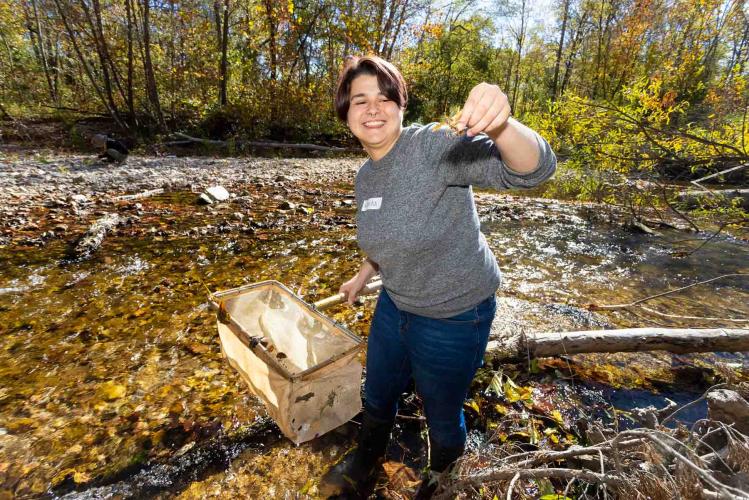
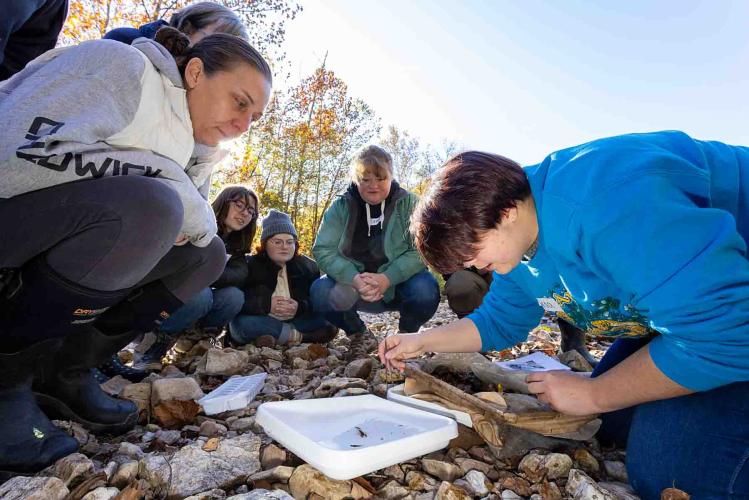
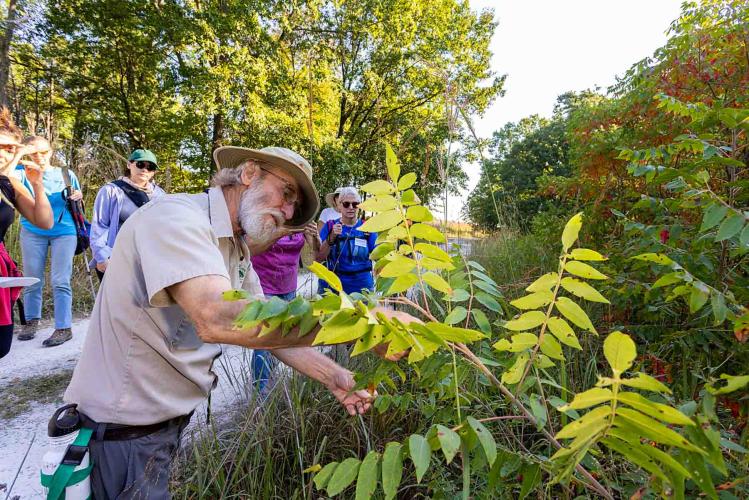
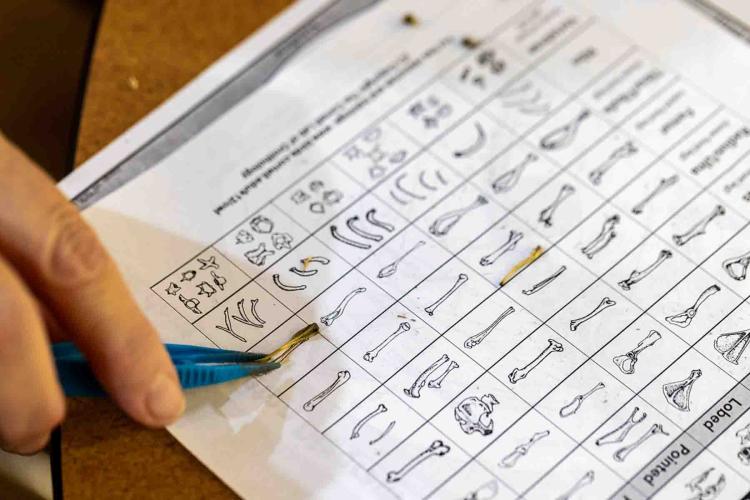
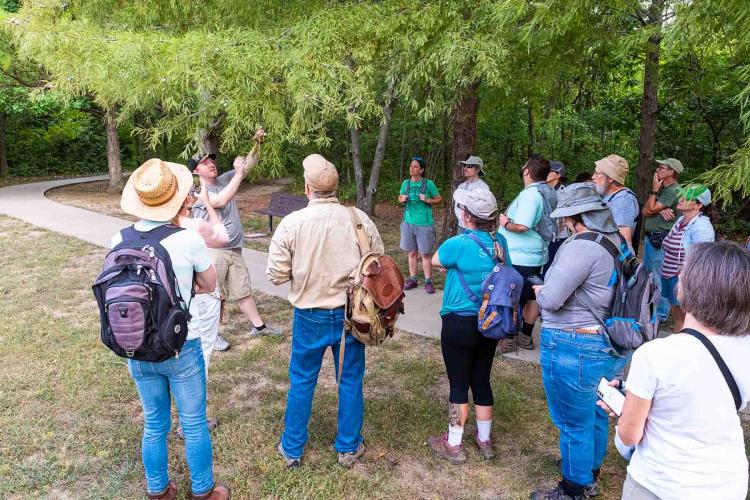
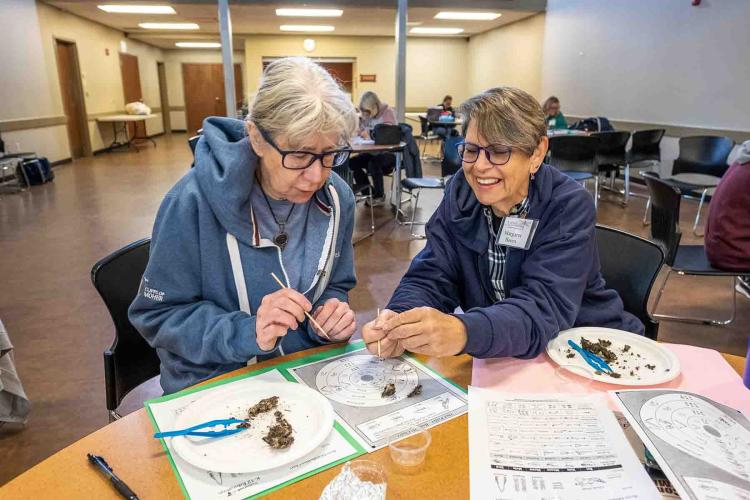

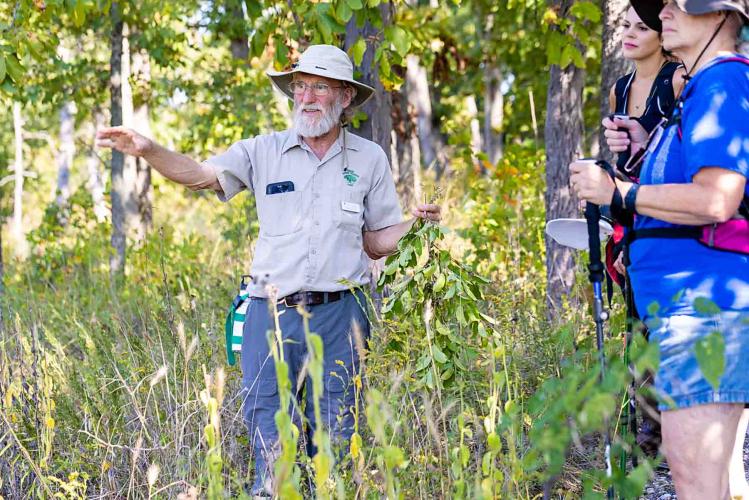
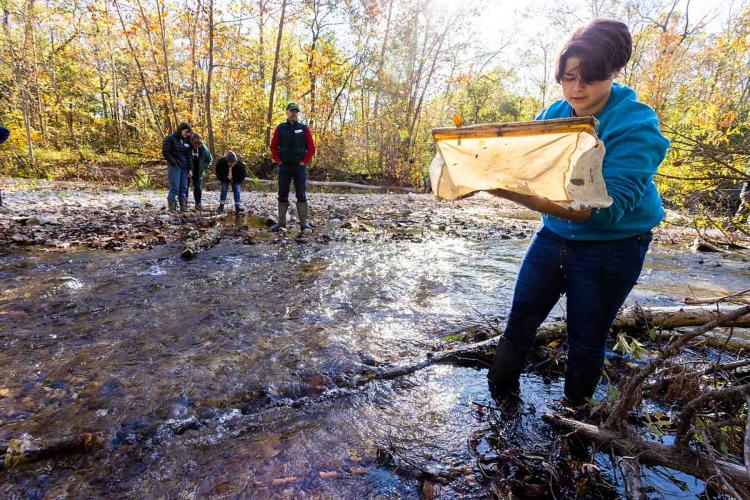
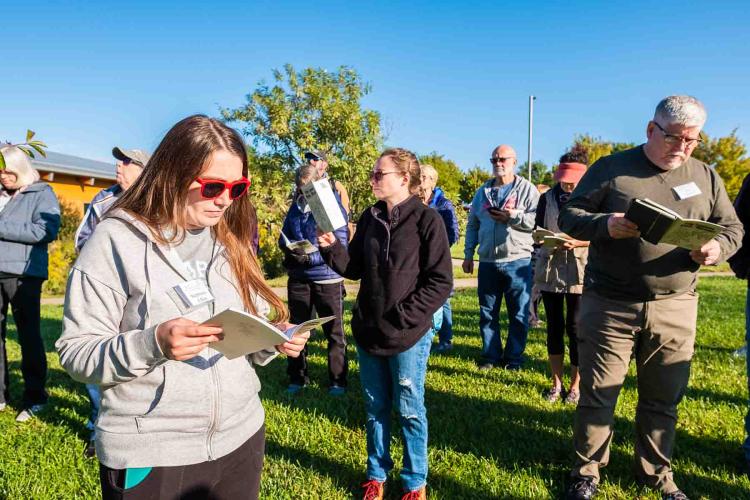
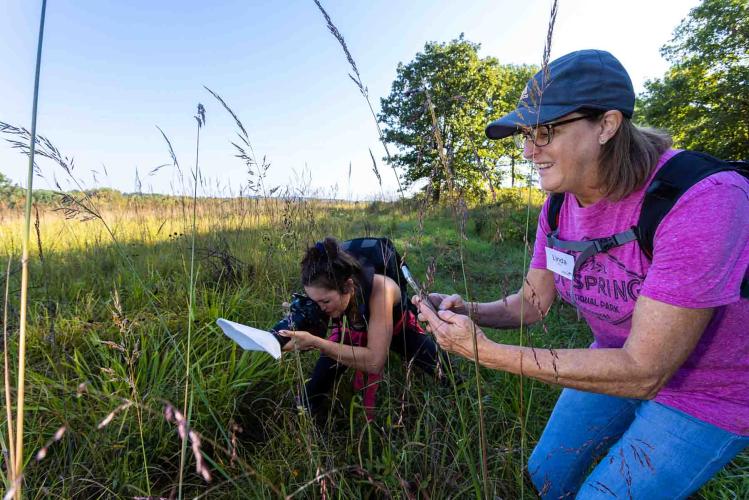
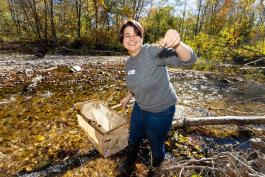
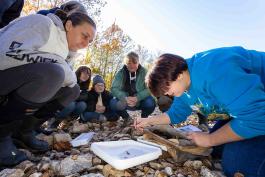
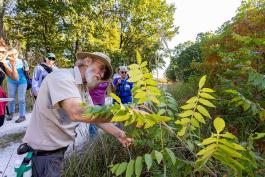
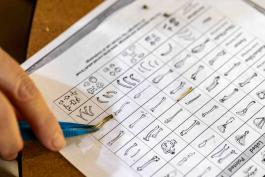
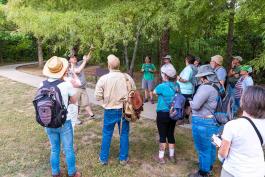
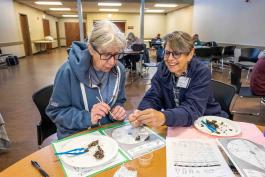

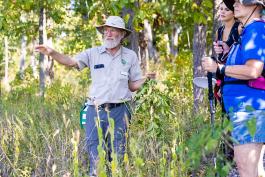
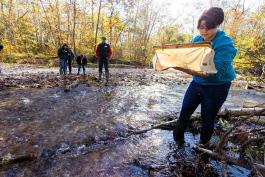
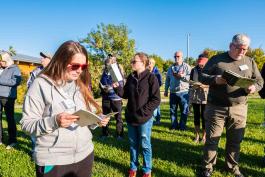
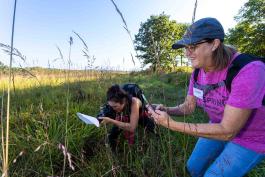
Also In This Issue
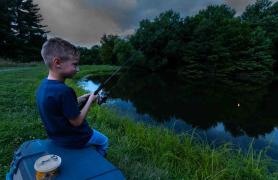
Tips for a successful nighttime fishing trip
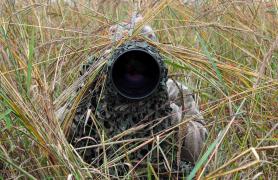
If you’re looking for a place to watch and photograph wildlife, head to the water
And More...
This Issue's Staff
Editor - Angie Daly Morfeld
Associate Editor - Larry Archer
Photography Editor - Cliff White
Staff Writer - Kristie Hilgedick
Staff Writer - Joe Jerek
Staff Writer – Dianne Van Dien
Designer - Shawn Carey
Designer - Marci Porter
Photographer - Noppadol Paothong
Photographer - David Stonner






















